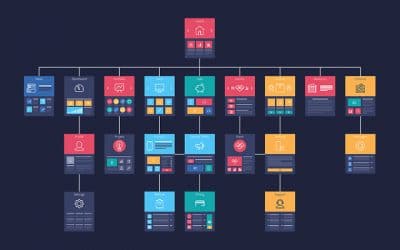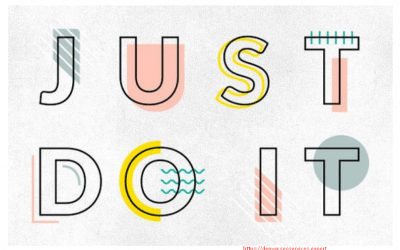To tell you in advance, the following is not an absolute answer.
I have written for a long time based on conversations and opinions (especially grievances) with various designers.
We’ve already written logically well what web designers do in textbooks and books.
We have almost read books. But I still wondered if this question arises because more than one has hit various variables in the real world.
Not all web designers do the same thing.
There are many types depending on the situation, but I’ll assume there are two types.
- Web designers with a heavy emphasis on graphic design, mainly on cyan design or design elements
- Web designers who work together to design and create publishing or other web-like interactions.
These types tend not to be self-determined but naturally determined by the work environment. That’s why I often think about my next vision while I’m working.
There may be many reasons for choosing a type, but it’s up to you and nobody else takes responsibility. My vision is my choice, and I don’t want to rationalize that the environment is ‘just so’ .
The two types have different working directions and different tools and skills. (It’s like a character training game? )
Here is the complete guide for: Business Website Development!
A type is specialized in design direction.
Design elements such as drawings, illustrations, calligraphy, and typography can be created by yourself to complete the website.
It’s not just layouts, but design elements and concepts.
This type is based on the strategy that comes from planning, and the design strategy is very important to include in the draft. But there are drawbacks. Since you are not familiar with markup, there are times when you create things that shouldn’t be designed in a web implementation.
Someone who understands these words may be type B. The reason is that if you start coding your own design cyan on the web, you may find that 100% of cyan can’t be the same on the web. For example, the layers and layers of Photoshop can be overlapped with effects such as Multiply, Overlay, and Subtract for the visual effect. Sometimes you want to pull out a design and implement it. (Just! In short, web browsers don’t support Multiply, Overlay, and Subtract)
Also, because they don’t know the rules and optimizations of markup, layouts are free-form layouts. This comes out a lot. It ‘s pros and cons. There are some really original designs, but it can be hard to implement with a website, or even if you do, it may not be optimized for the structure of the website.
In the case of type B, it is also called a multi-type web designer.
You can code your website to some degree based on your own design.
However, if publishing exceeds 50% in the proportion of web design and publishing, it may be right to enter the publisher in the domestic position.
Or even today, some web designers can implement interactions using JQuery, not even the core of JavaScript. (Maybe you implemented some interaction using Flash.)
These multi-type web designers are more freelancers than A type.
Since it produces results from design to publishing on its own, it is preferred to companies that see two effects of one-person employment rather than companies that clearly divide positionalization.
In particular, because of the direct coding, the design is optimized. From design to work, there are many cases where you are concerned about optimization and completeness in a web browser.
But this can also be a disadvantage. Being trapped in a mold creates a habit that the design itself can only be created within that frame. So instead of trying to go beyond the design of the fence, you rely on stable habits.
And because time is limited, it’s hard to complete design and publishing at the same time. That’s why we often use design resources to create design proposals. As a result, it sometimes overlaps with the UI used in one site, and design elements such as photographs and calligraphy sometimes overlap with other sites. And when I make a good resource here and a pretty resource there, I feel like I’m a bit far from the concept.
Yes, what type fits ‘ll have some type can not be defined as wrong will.
It may be your taste. It flows naturally in a type suitable for oneself.
Starting with the web designer, the length can change. Go as a PM or planner, go to a UI / UX designer, go to a front-end developer or publisher, and so on. It’s natural for a person to want to make a good choice about which position makes more money and has better prospects. (It’s because you’re trying to eat?)
Let’s talk about what web designers need (skills or knowledge).
1. You may be wondering what you need the most to get a job.
Design qualification? Award-winning competition? Of course, there is nothing bad about it.
Above all, there is something to see first.
portfolio!!!!!
You can ask how a new recruit has a portfolio. The experience of the officially launched site does not necessarily fill the portfolio.
We’ll call the work called Etude to be a perfect art.
If you list them so you can show them to someone, that’s your portfolio.
I’m looking for a design practitioner and I’m curious about that person’s design skills, the company is most curious about what you can do and how much. I personally think it’s good to invest in design work that will fill your portfolio with more investments (time, effort, money?) For qualifications or competitions. Easy certifications or awards are not visible in front of the portfolio. (I have a bit of certification, of course, but I did not acquire it by necessity)
But unconditionally ‘no credentials required! No competition award required! ‘ It can not be defined as.
If you’re just a graduate of a college and you’re just a grade and you’re not sure how to choose among the candidates, you can get extra points for candidates who have one more qualification. The result is that I used my personal time to study more relevant knowledge than my friend. Of course, there may be some candidates who are better and harder than those who have qualifications, but there is no way to tell them by telepathy if there is nothing to prove it.
2. What skills do you need to work in practice now?
Of course, it’s great if you have some understanding of HTML and CSS, but to catch The design skill to get the layout first and foremost. Wouldn’t it be great if you had a high skill to catch the main cyan with Photoshop? In the A-type web designer, the main cyan designer and sub designer are divided. It’s important that the main cyan plays a big role in controlling the center of the website. Given that time is limited, neither design nor skill can be improved at the same time. (I wanted to hold two rabbits too)
Thank you for reading this long article.
Any corrections or comments are welcome.





